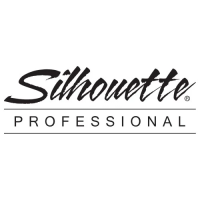6
SELF-CLEAN FUNCTION:
This function can be used to self clean your iron and remove scale and impurities. Use the
self-clean function once every two weeks. If the water in your area is very hard, the self-clean
function should be used more frequently.
1. Make sure the appliance is unplugged.
2. Set the Steam Control Knob to the far left position “Self-Clean”.
3. Fill the water tank to the maximum level.
4. Select the maximum ironing temperature.
5. Plug into wall outlet.
6. Unplug the iron when the temperature pilot light has gone out.
7. Hold the iron over the sink and gently shake the iron back and forth. (Steam and boiling
water will come out of the soleplate. Impurities and akes (if any) will be ushed out.)
8. Repeat if necessary.
CLEANING:
• Before cleaning, ensure that the iron is disconnected from the power supply and has
completely cooled down.
• Deposits and other residues on the soleplate can be removed with a rough cloth soaked
in a vinegar/water solution.
• The main iron body may be wiped with a damp cloth and then polished with a dry cloth.
• Do not use abrasives on the soleplate.
STORAGE:
• Before storing, turn the Fabric Selection Dial to “OFF” and the Steam Control Knob to the
picture indicating NO STEAM.
• Ensure that the iron is disconnected from the power supply.
• Pour any remaining water out of the tank.
• Stand the iron upright on its heel rest and allow to cool completely.
• Loosely loop the power cord together and store the iron on its heel rest.
HELPFUL HINTS
• Always read garment labels and follow the manufacturer’s ironing instructions.
• Sort the articles to be ironed according to the type of fabric.
• You should rst iron garments requiring low temperature to avoid damaging them with
an iron that is too hot.
• If you are unsure of the fabric content of the garment, test a small area, such as a seam
or facing, before ironing a visible area. Start with a low temperature and gradually
increase the heat to nd the best setting.
• When changing the temperature from a high setting to a low setting, allow approximate-
ly 5 minutes for the lower temperature to be reached.
• When steam ironing, use long, slow passes over the fabric. This will allow the steam to
penetrate the fabric while allowing the heat of the soleplate to dry out the moisture.
• To iron linens, turn garment inside out. Be careful not to use and iron that is too hot
because the lining may melt or stick to the soleplate.
• To iron zippers, use an ironing cloth or make sure the zipper is closed and iron over the
ap. Never use iron over an unprotected zipper.

